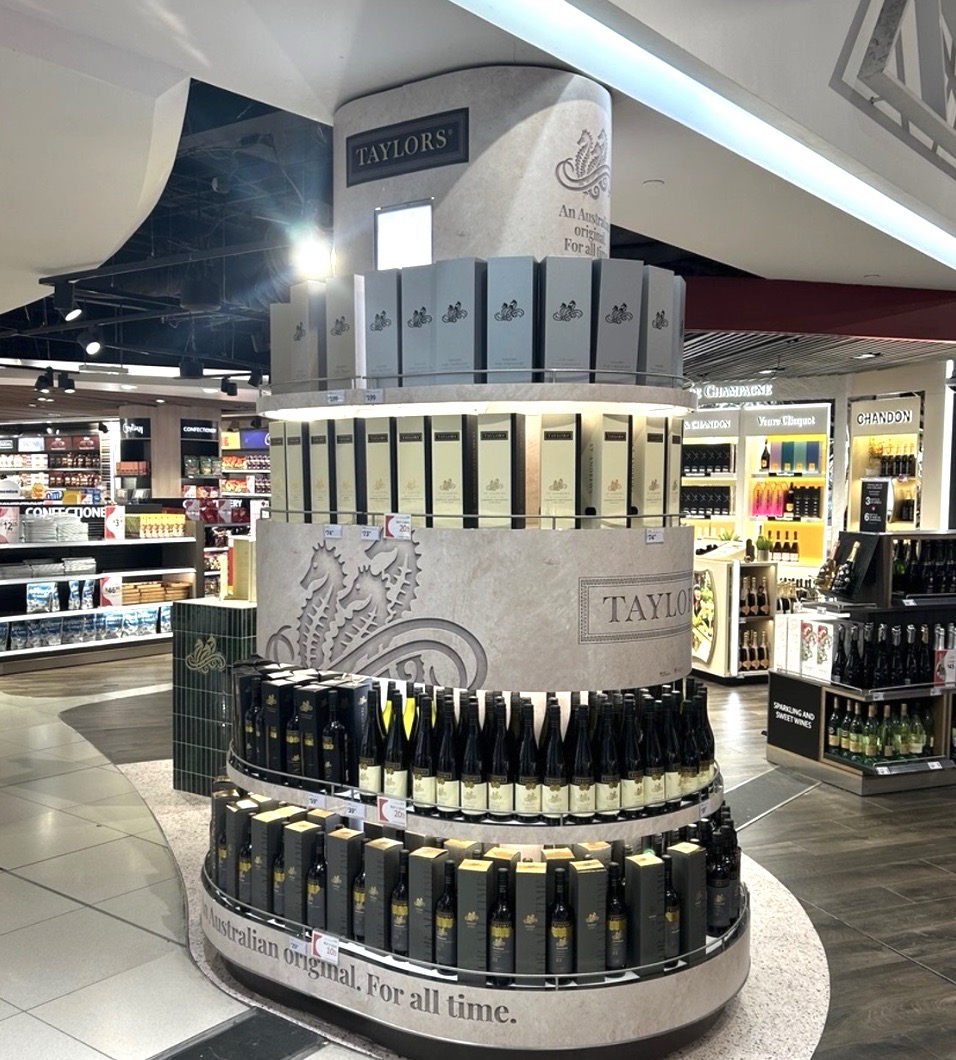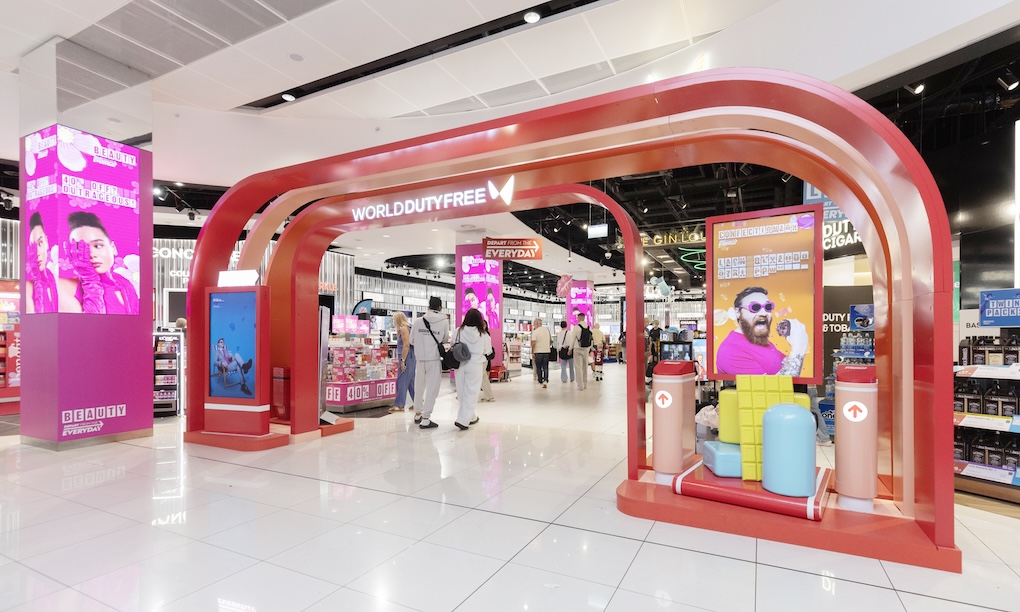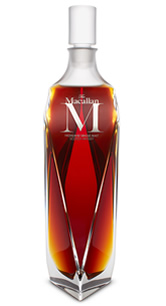 |
The Macallan M |
As The Edrington Group unveils a unique expression of its famed single malt whisky The Macallan – M – The Moodie Report is privileged to bring you the inside story behind its creation. We begin with an exclusive preview of the launch through visits to the Lalique crystal factory in France and The Macallan distillery in Scotland. In the coming days we’ll continue our voyage of discovery as we bring you on-location details and commentary from the Asian launch with the world’s leading luxury duty free retailers. In part one of an exclusive series, Rahul Odedra reports on one of travel retail’s biggest-ever drinks launches.
Built in 1700, Easter Elchies House sits at the heart of The Macallan Estate, watching over the distillery in one direction and the River Spey in the other. As one of the “˜Six Pillars’ (see below) underpinning everything The Macallan does, it acts as a spiritual homeland of the company – bearing testament to its past, present and future.
The main reception room serves as a museum for the distillery’s heritage, featuring historic bottles and paintings of the some of the key individuals from the brand’s illustrious past. Guests are also able to enjoy a (literal) taste of its present at the room’s grand oak table centrepiece.
The company dwells understandably on its long and rich history, but notable prominence around the room is also given to a series of bottles released over the past few years. These bear not only the name of the famed Speyside distillery but also that of famed French crystal maker Lalique. They are the end result of collaboration between two very different companies, brought together by common values and extraordinary ambition.
M is the latest and arguably the most important offspring from this illustrious partnership. For The Macallan, owned by The Edrington Group, it represents what the company believes is the pinnacle of its core range of single malt bottlings. And as The Moodie Report discovered during visits to both the distillery in Scotland and the Lalique factory in France, it is a project that has been both a tremendous challenge and a source of inspiration for both houses.
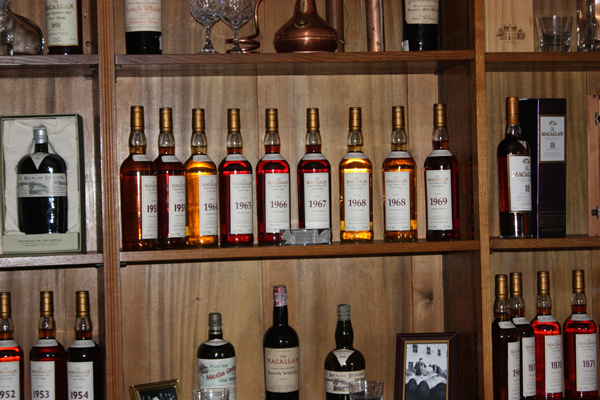 |
Historic bottles on display at Easter Elchies House (above) and a previous decanter produced by Lalique for The Macallan (below) |
 |
The origins of M
The Macallan and Lalique are the main two brands behind the decanter, but M’s origins lie with a third party. The inspiration and design came from famed designer and magazine editor Fabien Baron, who in the past has worked with the likes of Andy Warhol, Calvin Klein and Burberry.
The Macallan Director of Malts Ken Grier had come to know Baron through a previous project, and invited him to visit the distillery. Over a breakfast at Easter Elchies House the seeds of the project were sown.
“He was talking to me about what he’d seen, and something that resonated with him was the incredible diversity of colour – and how that colour moved and changed in the glass,” Grier recalls. “We sat down and at the breakfast table came up with an idea about creating something that would be the pinnacle of decanterisation.”
Baron returned to New York, where his team at Baron & Baron worked on ideas to present to The Macallan. Any nerves Grier might have when he flew over to the USA were assuaged when the velvet cloth was lifted off the decanter.
“I was just blown away,” he says. “The idea was to create something that’s a perfect showcase for the bottle. With this, what you have around the sharpness of the edges is a prism effect and, as you rotate the bottle, it’s like a kaleidoscope of colour.”
With the decanter design complete, it was up to Lalique – whose history stretches back to 1885 (its crystal work commenced in 1945) – to match Baron’s creativity and The Macallan’s ambition. An incredible journey had begun.
 |
A 1.7 tonne crystal chandelier on display at the Lalique Musuem |
When The Macallan met Lalique
In the foyer of the Lalique museum in Wingen-sur-Möder, Alsace, hangs an extraordinary 1.7 tonne crystal chandelier, made up of 337 pieces and extending 3m in height. Created by the company in 1951 for an international exhibition at the Musée des Arts Décoratifs dedicated to the art of glass, it was so heavy that no suitable location could be found for it afterwards – so it was consigned to storage.
In 2008 it was finally restored to its former glory and hung in a specially designed building. To witness it first hand is to be enthralled by a breathtaking, exquisite piece of work in terms of fineness, ambition, design and scale.
As other displays at the museum (as well as the products in its Paris boutique) reveal, Lalique has an impressive history of working with prestige brands. Such alliances date back to its early, pre-crystal origins, when it provided bottles for Coty, right up to the present day with the work it does with Lady Tina Green on interior design.
The story of the collaboration between The Macallan and Lalique began in 2004. The whisky house was looking for a crystal company that could develop a series of decanters which would reflect what it refers to as its “˜Six Pillars’ – “˜The Spiritual Home’ (Easter Elchies House), “˜Curiously Small Stills’, “˜The Finest Cut’, “˜Exceptional Oak Casks’, “˜The Natural Colour’ and “˜The Peerless Spirit’.
 |
“The history and identity of the two brands are remarkably similar. Both companies possess very complex traditional skills and innovative drive“ |
Silvio Denz President & CEO Lalique |
“We’d always admired Lalique because of their extreme commitment to crafting, the heritage they have, and their commitment to ongoing innovation, craft and inspiration in terms of design,” says Grier. “They sit at a different level to any crystal maker in the world. Their commitment to the quality of what they make, handcrafting, value and collectability are very appealing.”
For Lalique, a company with a history of working with top perfume and design brands, there was also a strong appeal in working with one of the leading names in single malt whisky. President and CEO Silvio Denz explains: “Lalique was interested in working with an internationally recognised partner in the world of high-end spirits to develop its craftsmanship and know-how in the very niche market of luxury decanters.
“The history and identity of the two brands are remarkably similar. Both companies possess very complex traditional skills and innovative drive. The Macallan is founded on six pillars, Lalique on five. Heritage, creativity and craftsmanship are strong and mutual values.
“The Macallan is part of Scotland’s heritage, while Lalique is considered the crown jewel of the French crystal industry. The international reputations of both companies are founded on passion, expertise and savoir-faire developed over many generations.”
The original mission has already yielded four of the Six Pillar decanters, each one already highly collectable, with a fifth set to be released later this year. In 2010 Lalique used its “˜lost wax’ technique to create a unique vessel for The Macallan Cire Perdue 64 Year Old in Lalique. After touring the world the bottle sold for a staggering US$460,000, making it the most expensive spirit of all time.
For the M decanter, the craftsmen at the Wingen-sur-Möder factory were tasked with bringing the Baron-designed vessel to life, creating 1,750 individual decanters in the first year – each one underpinned by a refusal to compromise the house’s high standards.
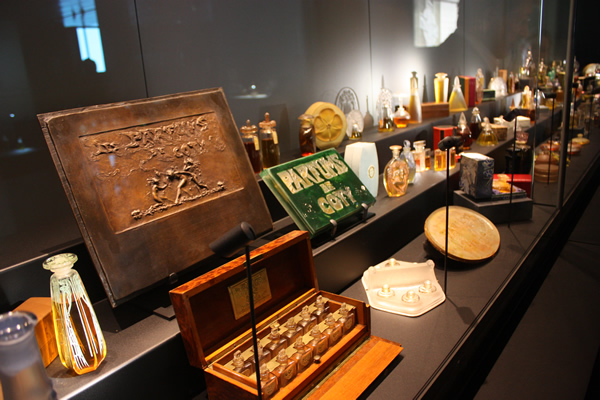 |
Examples of historic Lalique perfume collaborations |
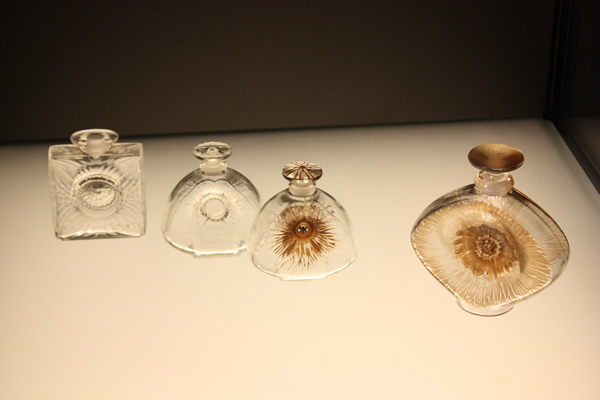 |
When The Moodie Report visited the site at the end of April, it was the attention to detail and quality control which stood out. At every stage of the making of the decanter, throughout both the hot and cold processes, craftsmen watched for the slightest blemishes, the tiniest bubbles and the slightest deviation from the intended design.
On average half of all the pieces that begin the production process in Wingen-sur-Möder fail to make it out of the factory, rejected by the time they have passed through the 30 or so pairs of hands involved in their creation. The Lalique bottles are no different.
 |
The decanter begins to take shape in the hot workshop |
And though the spectacular part of the process may take place in the hot glass area – with molten crystal, fierce naked flames and the buzz of real industry – two-thirds of the work on each decanter is carried out in the cold-glass workshop, with each piece methodically polished, cleaned and frosted.
The finished decanter, even without any of the golden liquid that will ultimately fill it, has a hypnotic elegance, from some angles appearing to be about to topple over (thankfully an optical effect) and from others taking the prism effect to the extreme. The bottle has a satiny finish, with a hint of frosting as a tribute to Lalique’s craftsmanship, while its six facets are a clear nod to The Macallan’s Six Pillars.
 |
Blocks of crystal glass (above) at the Lalique factory |
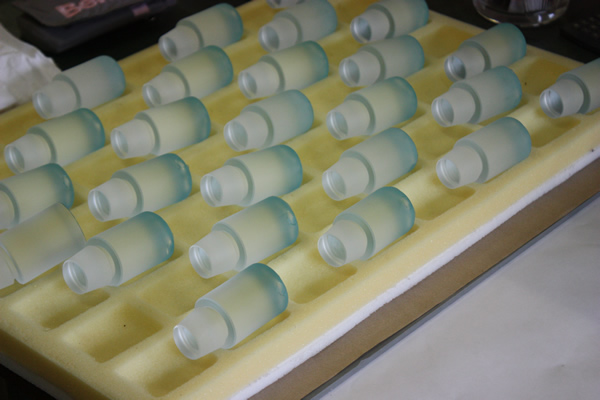 |
The frosted stoppers for the M decanters |
With the decanter complete, Lalique’s involvement in the product ends, and the story moves across to Scotland, to the rolling hills of Speyside, Easter Elchies House and The Macallan distillery”¦
The Whisky Maker comes to the fore
In every industry, in every profession, there are people whose undying passion underpins everything they do, everything their companies stand for, and whose unabated enthusiasm is both profound and infectious.
The Macallan Whisky Maker Bob Dalgarno is such an individual. His modesty and calm way of going about his job scarcely reflect his critical role as the man responsible for each and every bottle that comes out of the Speyside distillery. However, settle down for a few drams with him and discuss the delicate flavours, combinations, noses, tastes and finishes of The Macallan malts, and it is clear he was born to it.
 |
The Macallan Whisky Maker Bob Dalgarno talks through the making of M |
When The Moodie Report was given a preview tasting of M at Easter Elchies House, Dalgarno explained what he was trying to achieve when given the challenge of creating a single malt that would live up to the promise of its spectacular vessel.
“We were looking for something fruity but without sharp edges to it, like peaches and raisins,” he says. “Then there are ginger notes sitting behind that fruit. You get strengths that work for you, bearing in mind that this is a cask-strength whisky we’ve put together.
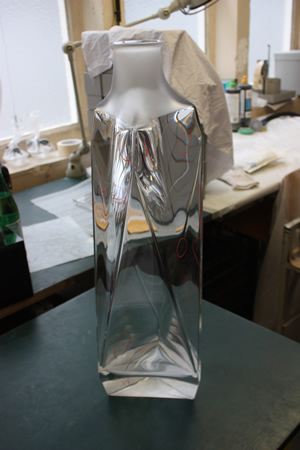 |
A decanter close to the end of the production process at the Lalique factory |
“There are around seven casks in it. There are cinnamon and vanilla, and the oak is quite polished – it’s well used and aged, and it gives it a nice balance at the end. We were trying to show as many characteristics as we could from the predominantly European oak casks.”
The faith placed in Dalgarno to meet the challenge of creating a whisky to match the decanter was strong, and again Grier was left in no doubt about the result. “The product is extraordinary, and Bob has worked long and hard to get a liquid which has complexity, with so many layers breaking through. It really mimics the colour coming through the bottle,” he enthuses. “The whisky has no artificial colouring added to it. Everything you get is straight from the cask.”
The tyranny of age
For The Macallan, M is far more than another one-off collaboration with Lalique. The distiller intends to make it a permanent part of its offering, effectively setting it up as the top of its core range. Just 1,750 bottles are being offered in the first year (to March 2014), but Grier has no intention of ramping production up significantly after that.
“The plan is to be very selective, because as much as anything it is a halo for The Macallan. It shapes and forms the reaction of consumers to the brand,” he says. “We aim to have The Macallan as a desired brand, something more akin to the luxury space.
“Bob will release what he thinks can match the quality, and he controls the acceptability of the liquid. We don’t see it being something that will grow exponentially, but we want it to be a centrepiece in the world’s best bars and liquor stores. We’re not going to make it a mainstream piece. What it will be is an ongoing item for sale. They will all be numbered for each year – we think that is important for collectability.”
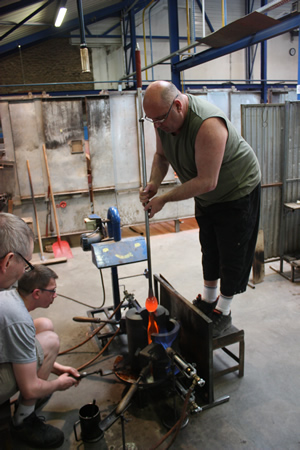 |
Molten crystal being blown into specially designed moulds for the decanter |
In recent years The Macallan has led the way in moving away from the industry’s traditional emphasis on age statements, and arguably M represents ultimate test of that decision. Indeed it is part of the 1824 Series, which differentiates single malts by colour rather than by age. The age statement debate rages on in the drinks industry, but the company is confident of its position.
“The 1824 Series was about asking ourselves how we could excite our existing drinkers and recruit new ones,” explains Grier. “Bob came up with the idea of turning the entire world of single malt on its head by streaming for colour.
“The old way of having a minimum age and only using a narrow band of casks to help you get there was completely exploded. Bob has now got the ability to produce products to a colour spectrum, and within that diversity of casks.
“M is a fitting pinnacle for the artistry that Bob brings together to create a whisky that conforms to a visual picture that he has in his mind, as opposed to the tyranny of certain ages of cask.”
The future of the partnership
The partnership between Lalique and The Macallan has clearly been a fruitful one for both parties, this time with the additional input from Fabien Baron, and Grier is confident that there will be plenty more to come for lovers and collectors of both whisky and crystal.
“We have a long-term commitment to working with Lalique, and it’s our intent to find ways to keep working with each other long into the future,” he says.
Denz is equally enthusiastic about the future of the partnership, and is delighted both with the interest generated by the decanters Lalique has created and with the relationship he has been able to forge with the distiller.
“Single malt whiskies have become extremely trendy over the past ten years, and The Macallan is one of the very best. The history of The Macallan, its reputation and the quality of its products are incontestable, and a perfect fit for Lalique,” he affirms.
“The demand for single malts seems boundless. Lalique is happy to provide the vessel for the very best.”
M, a very modern manifestation of the “˜auld alliance’ between Scotland and France, is set to take centre stage in some of the world’s leading airports. Seldom will the power of creative collaboration have had greater impact in the travel retail channel.







